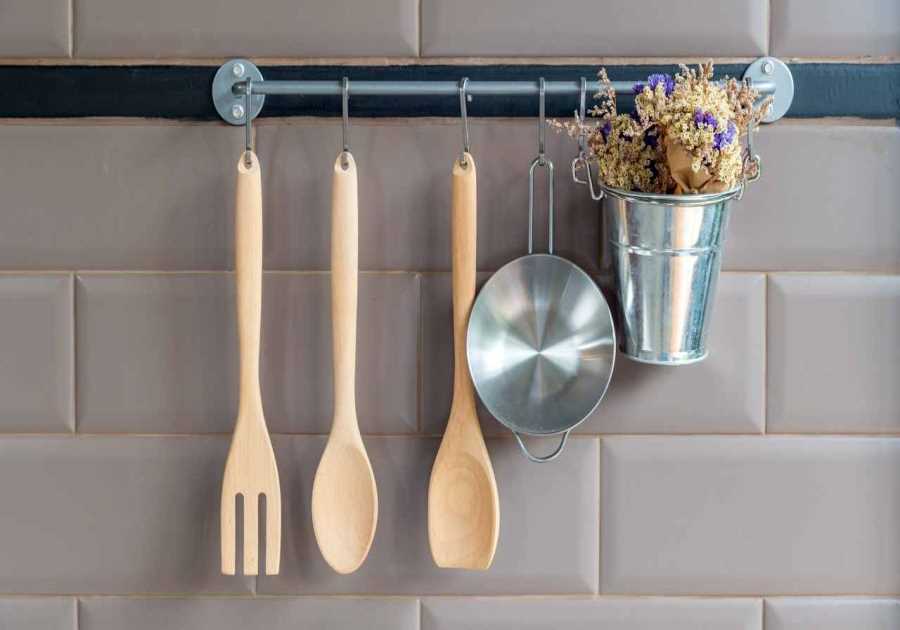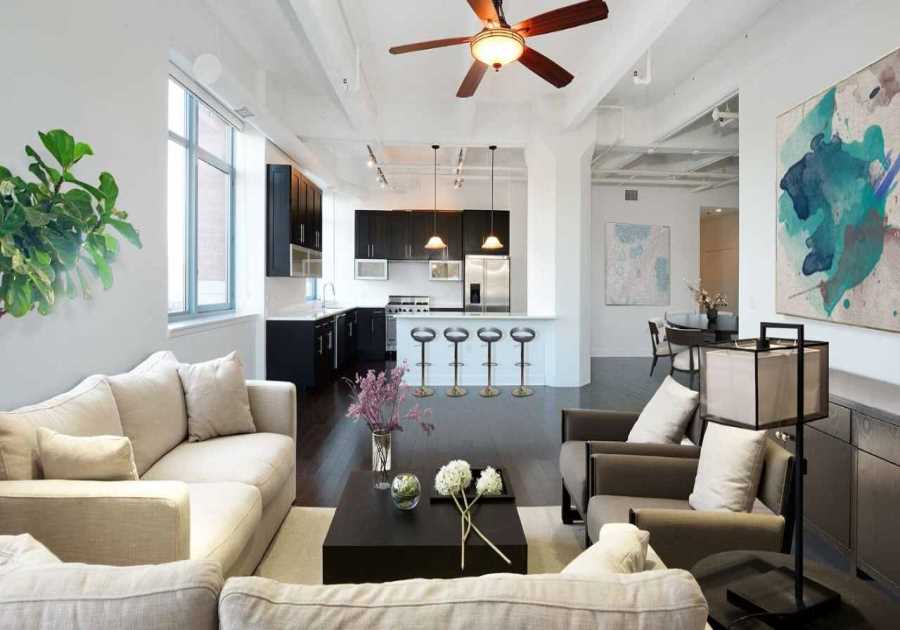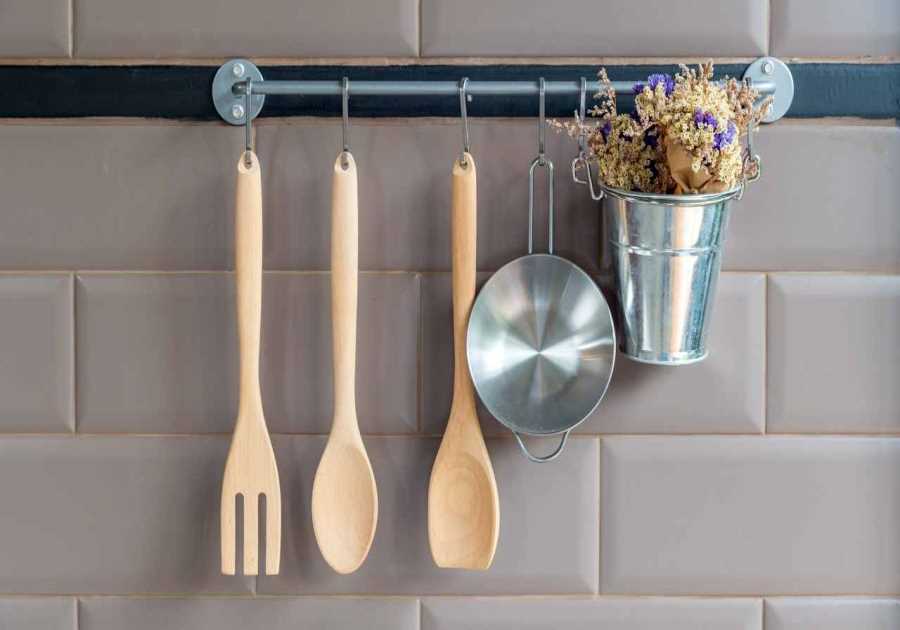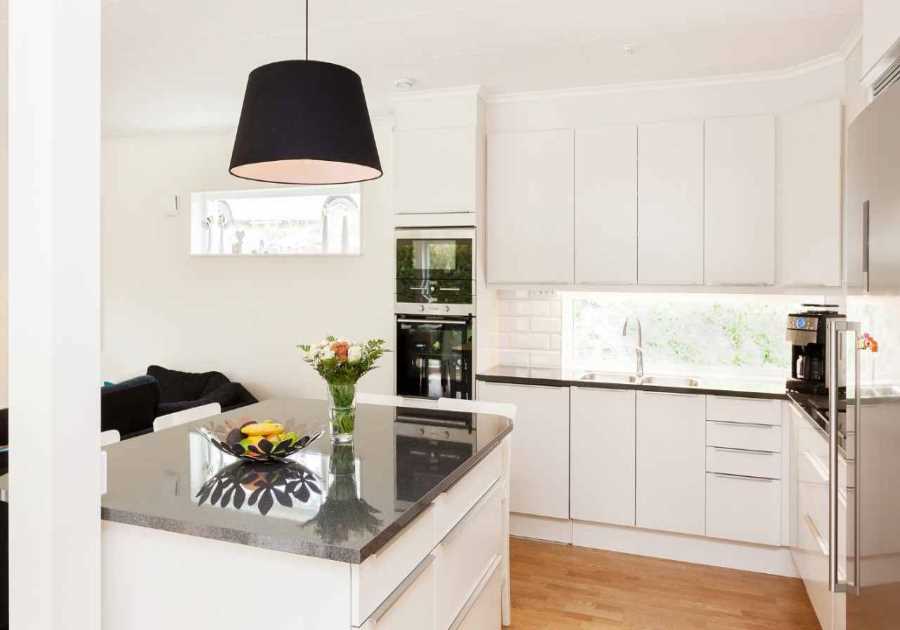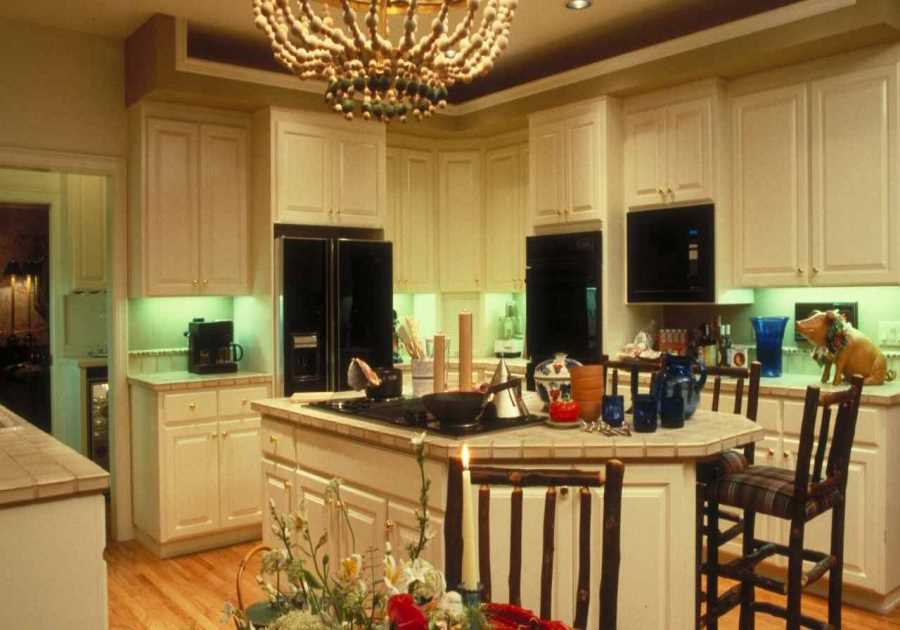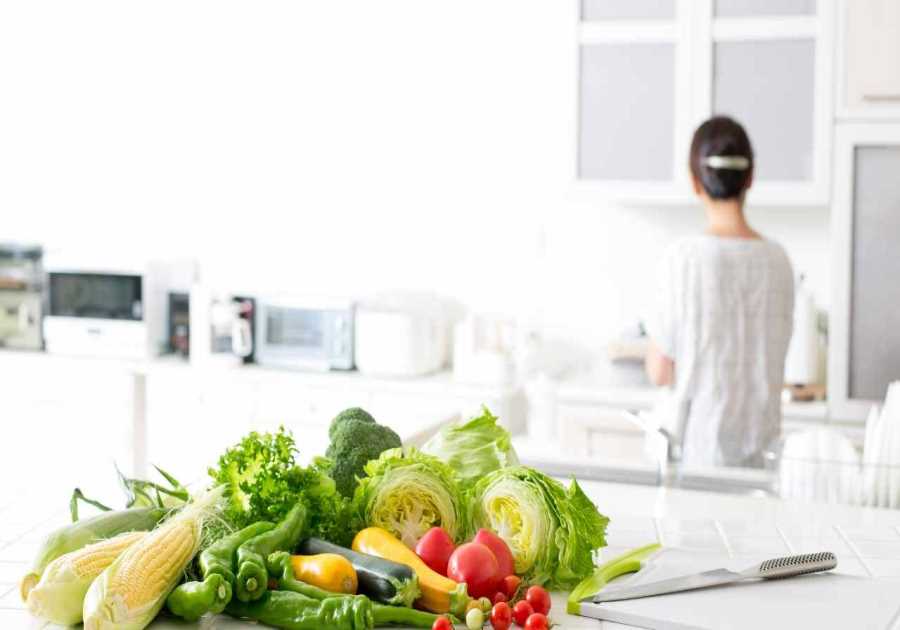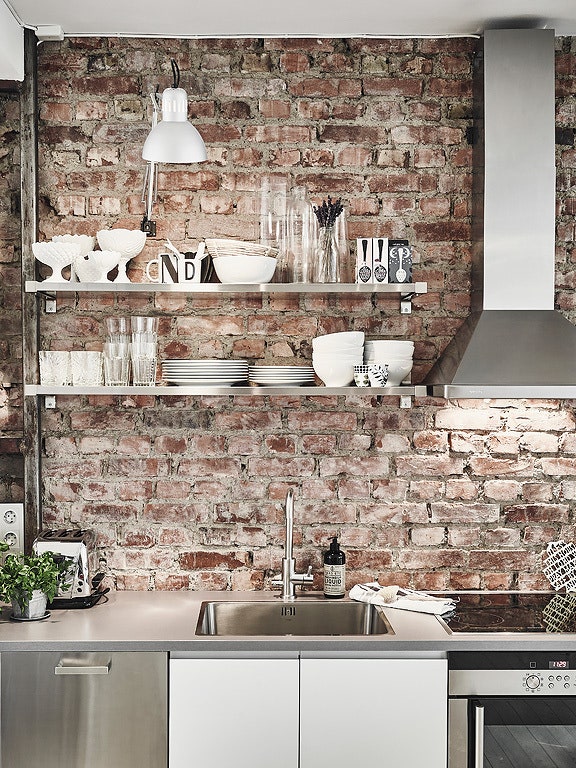
When choosing kitchen backsplash ideas, there are many different things to remember. If you're looking to create a more modern look in your home, there are several styles to choose from. You can opt for a patterned vinyl, a vintage subway tile, or a mirror.
Vintage subway tile
Using vintage subway tile for your kitchen backsplash is a unique way to give your kitchen a stylish yet warm feel. Subway tiles are available in a wide range of colours and patterns.
Among the most popular patterns are chevrons and herringbone. These patterns use short edges that end at a 90-degree angle, which creates a distinctive pattern.
Other exciting patterns include basketweave and running bond. The former is a playful design that adds geometric weaving to the overall look.
The latter is similar to the former but also mimics straight lines. This pattern creates a sleek, clean, modern look.
Victorian tiles
If you are looking for an unusual kitchen backsplash idea, look no further than Victorian tiles. There are thousands of designs and colours to choose from. They are a great way to add pattern and design to a traditional home.
Victorian-era homes were known for their intricate patterns and bold colours. The era also included oriental rugs, heavy drapes and ornamentation. Today, these styles are much more popular than they used to be. Whether updating an old home or creating an entirely new look, using Victorian tile is a great way to add character to your kitchen.
Peel-and-stick tiles
Peel and stick tiles are an inexpensive way to update your kitchen. However, before you go for this type of tile, you should know the best ways to prepare your wall for installation. The more careful you are with the task, the more likely your tiles will remain on your wall for years to come.
The first step is to clean the wall. This will remove any dirt or dust on the surface. You can also use a degreaser to get rid of any stains. Also, you can apply a skim coat to prevent water from seeping through the surface.
Beadboard
A beadboard kitchen backsplash is an attractive and stylish feature that adds a rustic touch to the kitchen. You can choose various colours to create a unique and charming accent in your kitchen.
Installing beadboard as a kitchen backsplash is easy and inexpensive. The material is an excellent choice for a farmhouse or cottage kitchen. It can also complement the traditional or vintage decor. Beadboard is easy to care for.
Before installing your beadboard backsplash, it's essential to consider your space. First, you need to measure the area you want to cover.
Patterned vinyl
A kitchen backsplash is a great place to use a pattern. The best ones will add personality to your gathering space and protect your walls. For inspiration, look to vintage storefront floor tiles or try some adhesive vinyl.
When it comes to patterned vinyl, you can choose from various textures and styles. Choosing the right one for your kitchen can be tricky. From adhesive vinyl tiles to faux stone and glass, you can find something that will suit your needs.
Creating a bold and colourful design with a simple vinyl tile backsplash is possible. You can find vinyl square and mosaic art tiles that will be perfect for a modern or traditional space. Or, for a more retro look, black and white hex tiles are perfect for a vintage feel.
Mirrored
A kitchen mirror backsplash is one of the most impressive kitchen design ideas. Mirrored backsplashes give the impression of space and a light and airy feel. This is especially useful in dark internal kitchens.
There are a variety of styles to choose from. You can go with an all-white mirrored backsplash for a modern and clean look or an antique mirror backsplash for a touch of sophistication.
The mirrored subway tile is a classic and works well with any style. Its curved edges add depth and texture to the design. Bevelled tiles also have a nice effect.
Chalkboard paint
The popularity of chalkboard paint continues to grow. It is a great way to add a decorative accent to your home. You can use it to create a backsplash for your kitchen or to decorate the back of your open shelves.
Chalkboard paint is easy to apply and maintain. It is also cheap and durable. However, it should be applied in thin coats. This helps prevent bubbling and drips.
To start, you will need to clean your wall. Use a sponge or a rag to wipe the surface. Make sure to remove any dirt, grease, or grime.
Frequently Asked Questions
What is the best design for a kitchen?
If there is enough space, an L-shaped layout with an island kitchen is best.
What colour goes best with a white kitchen?
A white kitchen can look great in various colours, but walnut is a good match. Natural wood tones will bring warmth to the space and will work well with the other colours. Black and grey can be a great choice if your preference is for something more subtle. If you're looking to make a bold statement, choose a bright color like yellow or red. Whichever path you choose, make sure that your decor matches the chosen color so the space looks cohesive.
Where should pots and pans go in the kitchen?
Pots and saucepans should be stored in the cupboard directly above the stove. This keeps them in reach when you need them. It also makes your kitchen counters look neat and clean. Pot racks can be useful to organize and keep pots and pans within reach.
What countertops pair best with white cabinets in the kitchen?
White kitchens allow you to be very bold with your countertops. Quartz countertops are the new norm now in kitchen design. In terms of what colours of quartz countertops would go well with your white kitchens, our top suggestions are as follows:
- Concrete grey in different shades
- Bold Granite-like Patterns
- Veiny marble-like designs
- Bright and striking colours like sunflower yellow or ocean blue
Statistics
- “We decided to strip and refinish our kitchen cabinets during a heat wave with 90-plus-degree temperatures and 90 percent humidity in a house with no air conditioning. (familyhandyman.com)
- Experts also recommend setting aside 20 percent of your budget for surprises, including unpleasant demolition discoveries. One is water damage, the electricity that is not up to code, or other budget-spiking gotchas. (hgtv.com)
- In the Pacific region (Alaska, California, Washington, and Oregon), according to Remodeling Magazine, that same midrange central kitchen remodel jumps to $72,513, and a major upscale kitchen remodels jumps up $11,823 from the national average to $143,333. (hgtv.com)
- Followed by cabinet cost, labour, and appliance costs consume 20 percent each of your budget. (hgtv.com)
- Keep 10 to 25 percent of List 2, depending on the budget. (familyhandyman.com)
External Links
forbes.com
homeadvisor.com
- Get a free estimate on how much it will cost to remodel your kitchen - Compose SEO.
- How Much Does a Kitchen Remodel Increase Home Value? - HomeAdvisor
remodeling.hw.net
homeguide.com
How To
Here are the 8 Basic Steps of Kitchen Remodeling for Beginners:
A DFY project for Beginners should start with these steps:
- Remodeling your kitchen involves three steps. First, you need to decide whether you want an entire kitchen renovation or just replacing fixtures and appliances. Second, choose the type of kitchen that best suits you and your lifestyle. Third, decide whether you want to do the job yourself or hire professionals.
- The next step in the process is to decide on what kind of kitchen design you want. Are you looking for a traditional kitchen that includes cabinets, countertops, and all the appliances? Or maybe you prefer modern designs, with clean lines and minimal storage. Do you have an idea for a large island or a breakfast nook? After you have chosen a layout and finished material, you will need to hire a professional contractor for the job.
- Many homeowners feel overwhelmed by all the decisions that must be made before starting a kitchen remodel. There are many easy ways to start.
- Decide if You Want to Renovate or Replace - The first step is to determine whether you want to complete a kitchen renovation or replace some of the appliances and fixtures. You will need to consider the costs of deconstruction, new countertops, cabinets, flooring, lighting, and appliances if you plan to completely gut the space.
- How to Determine Your Budget - Before you start thinking about how much money you can spend on your kitchen renovation, you need to calculate what you can afford. This includes everything including labor costs, supplies, and the budget.
- Choose Your Layout - Once you've determined how much you can spend, the next step is deciding where you would like to place your new kitchen. There are many options for layouts such as open concept, peninsula and galley, U shape, L-shape and corner. Each layout has pros and cons. It is crucial to find the one that meets your needs.
- Selecting Your Materials – Once you have decided on the layout of your kitchen it's now time to select the materials. This covers everything from cabinets and countertops, to flooring and lighting. There are many options available, so it's essential to research and select the materials that best fit your needs.
- Hire professionals - Once your materials have been selected, you will want to hire a professional who is experienced in kitchen construction. Good contractors will make sure everything runs smoothly, from design to completion. A good contractor will also offer follow-up services so that you don't have any worries during the installation process.
- Enjoy! You've reached the final phase of the kitchen remodel. Enjoy! If you enjoy your new kitchen you won't mind spending hours preparing delicious meals. However, if you still have doubts about your kitchen's design, it is worth taking the time to get acquainted with it. You'll be able to judge if your remodel was worthwhile.
.png)
